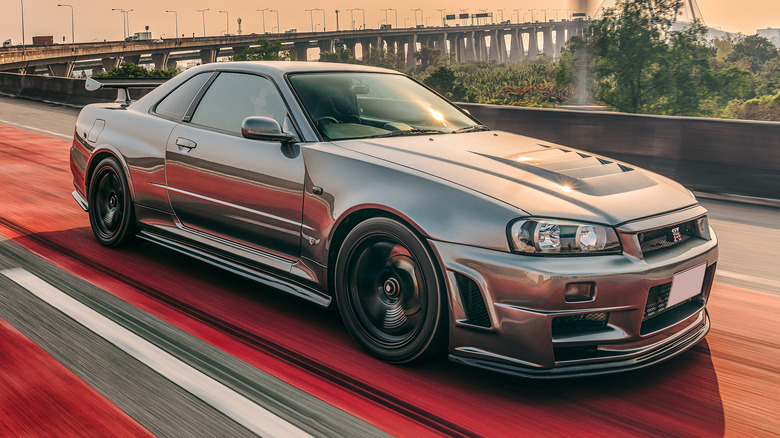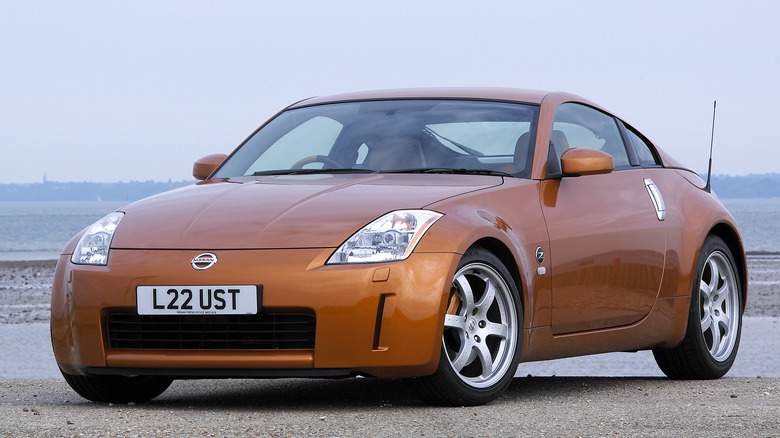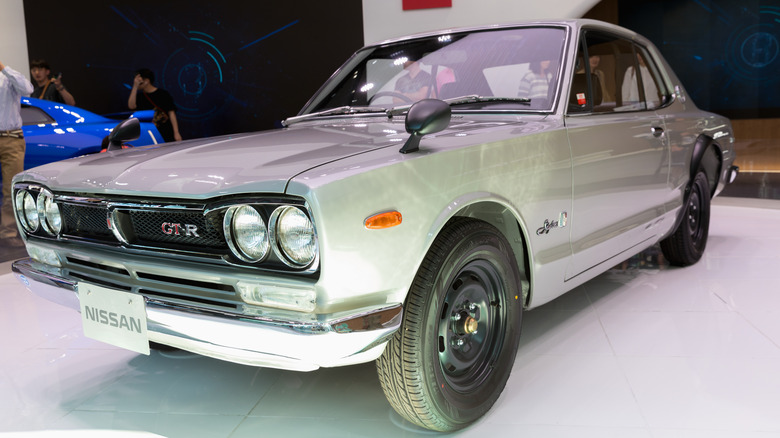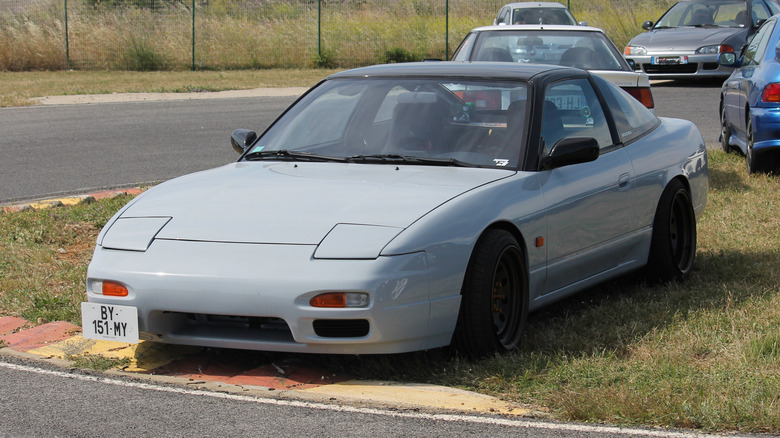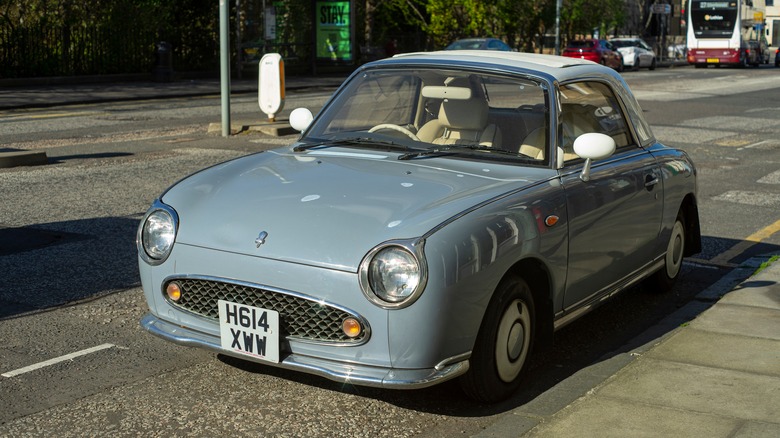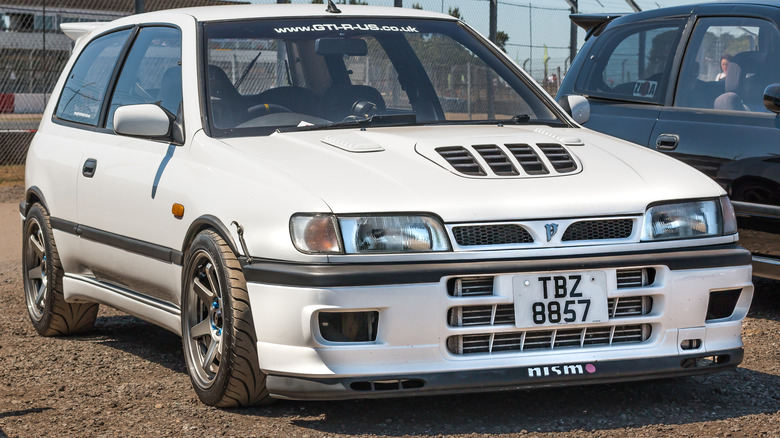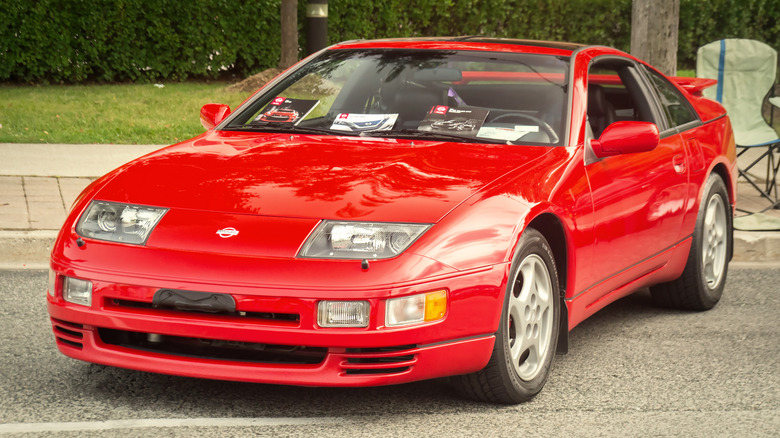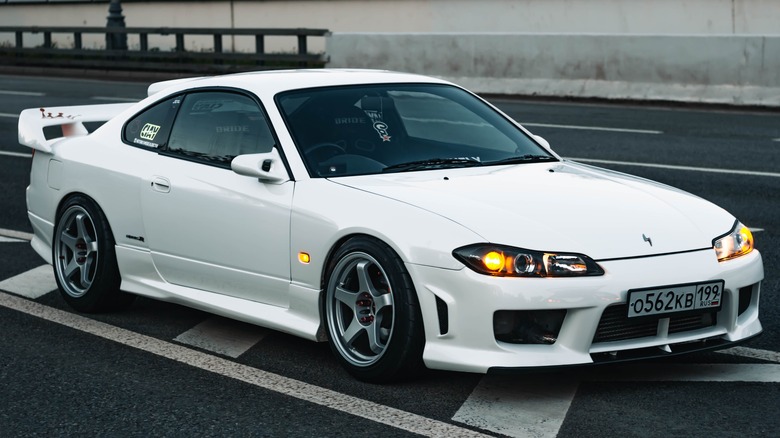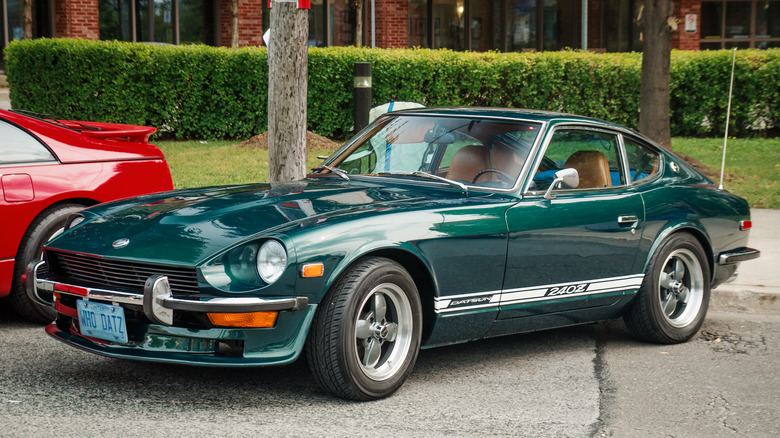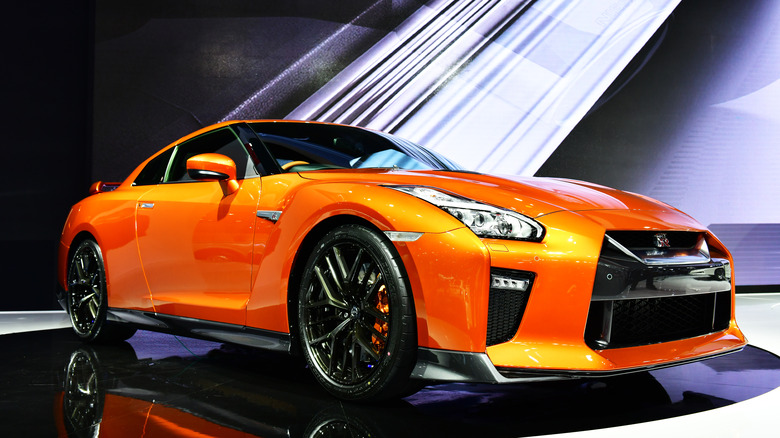The 15 Best Nissans Of All Time
Nissan has seen plenty of highs and lows throughout its 90 years of existence, going from a relatively unknown Japanese manufacturer at the end of World War II to a global carmaking juggernaut just a couple of decades later. The name Nissan was first used by the company in 1933, and in its early years it focused on making cars and trucks for the newly-emerging Japanese domestic market. Things really changed in 1958, when Nissan launched in America, trading under the Datsun name. Cars like the 510 and 240Z would come to redefine what the rest of the world thought of Japanese cars, impressing buyers with a combination of style, reliability and an affordable price tag.
Performance has also traditionally been a strong point for the company, with Nissan being responsible for some of the best-loved JDM sports cars of all time. From the earliest Datsun Roadsters right up to the modern range-topping GTR, the brand has spawned dozens of sports cars that continue to retain avid fan bases for decades after they are first unveiled. In recent years, Nissan has made a name for itself as an early promoter of electric vehicles, with its signature Leaf EV becoming the best-selling EV in the world in 2020. With the company now hard at work launching its electric Ariya crossover and the new Nissan Z car, it's a great time to take a look back at 15 of the best Nissan cars so far.
Nissan 350Z
The 350Z was released at a critical time for Nissan, as a period of financial instability throughout the late '90s forced the company into a partnership with Renault to stay afloat. This instability also meant that the previous Z car, the 300ZX, had been axed without a successor, leaving Nissan with no sports cars in its lineup for the first time in decades. The 350Z arrived in 2003 and was a modern take on the classic formula that made the 240Z a global sensation half a century ago: It was straightforward, it was stylish, and most importantly, it was a blast to drive.
Reviews at the time praised its excellent handling and 287 horsepower V6, which Car and Driver pointed out was only a fraction less than what was offered in a Porsche 911 at the time, except the Porsche cost over twice as much. Despite its power, the V6 engine was also remarkably reliable, most likely thanks to the fact that it was a tried-and-tested powertrain that was also used in everything from the Altima to the Infiniti QX4 SUV. The highest mileage examples of the engine are claimed to have passed the 300,000-mile mark without much more than regular oil changes.
Nissan R390 GT1
In 1998, Nissan decided to enter the GT class of the 24 Hours of Le Mans, but FIA rules at the time meant that their race car needed to be based on a road-legal car. The company didn't have a car that could be adapted, so it built the R390 specifically to fulfill this homologation requirement. The R390 GT1 was a race car adapted for the road rather than the other way around, with very few mechanical differences between the road car and the race car. According to Motor1, it was Tom Walkinshaw Racing who was responsible for developing the car's engine, a twin-turbo aluminum V8. The design rights to that V8 were later acquired by McLaren, who continue to use a version of the unit in their road cars today.
The performance of the road car was undoubtedly impressive, but it was shrouded in mystery. For example, according to Motor1, the car was capable of 0-60 mph in less than four seconds and had a reported top speed of around 220 mph. That would have made it one of the fastest cars in the world at the time, but strangely enough Nissan never actually confirmed the R390's top speed in an official run. Nor did they ever confirm exactly how many road-legal R390s were built, with some outlets claiming that just one was made and kept in Nissan's heritage collection, and some claiming a second car was also built and sold to an unknown collector.
Nissan Skyline 2000GTR Hakosuka
The first Nissan Skyline GTR was developed as a rival to the Porsche 904 GTS, which was dominating Japanese circuit racing at the time. The GTR was the first Japanese car to beat its foreign rival, and it did so with conviction, winning an astonishing 49 races in a row according to Evo. It was this racing prowess that began the legend of the GTR badge, and it remains among the most revered (and collectible) of any JDM car.
The car became known as "Hakosuka", which is a portmanteau of two Japanese words, hako, meaning boxy, and sukarain, a type of mountain road from which the car takes its name. The car came with a 2.0L S20 engine that made 160 horsepower, a very impressive figure for its day. Only 1,113 two-door Hakosukas were ever made, making them incredibly rare today. They're considered a kind of "holy grail" collector's item, and on the occasion that a genuine GTR does come up for sale, they're usually listed as price-on-asking only.
Nissan 240SX
The mid-'80s saw a decline in sales for Nissan's cars internationally, which was blamed on a number of factors including a stagnating lineup and new competition from Korean automakers. The 240SX was developed as a remedy to that decline, and it worked, becoming a sales success and helping to lift Nissan out of the doldrums both in terms of its finances and its reputation. It was described by Car and Driver as, "rekindl[ing] the spirit of the original Z-car," with its simple rear-wheel-drive layout and streamlined, modern design.
It was a hit with sports car buyers but its low starting price also meant it became popular with the drift community, as its balanced chassis and straightforward construction made it an ideal candidate for modification. Car and Driver list the 240SX's original starting price at $12,999, but today buyers will have to pay even more than that for a pristine example.
Nissan Figaro
At first glance, it would be easy to assume that the Nissan Figaro is a product of the '60s or '70s, but it actually first entered production in 1991. It was designed for the Japanese market as a quirky "halo" small car, with styling that was heavily inspired by the Kei cars of the Sixties. It was based on the mechanicals of the popular Micra hatchback, but featured a number of high-end extras including leather seats, a custom-designed CD player and air conditioning. According to The Figaro Shop, designer Shoji Takahashi was inspired in part by Swatch watches, whose two-tone color schemes inspired the Figaro's paint options.
The original Figaro concept debuted at the 1989 Tokyo Motor Show and production ran for just two years between 1991 and 1992. As per The Figaro Shop, the car was the brainchild of the Pike Factory, a Nissan special projects group that were also responsible for the likes of the Pao and S-Cargo. As well as remaining popular in their home territory of Japan, Figaros have gained a cult following around the world, particularly in the United Kingdom, where over 2,500 examples have been imported, roughly 10% of the entire global production run.
Datsun 510
Nissan, like every other Japanese automaker in the '60s, was struggling to shake off its econobox image in international markets. Buyers chose a Japanese car because it was cheap and low-maintenance, but not because it was actually good to drive. The Datsun 510, also marketed as the Nissan Bluebird, changed all that. It debuted in 1967 in Japan and came Stateside shortly after, and right away the car surprised buyers with its athletic nature while keeping its low starting price. This was no accident: Nissan's North American president Yutaka Katayama had a big role in the 510's development, and he made sure it was designed to appeal to the US market.
Very quickly, demand for the 510 skyrocketed, with Nissan adding extra body styles and engine options to keep up with demand. As well as being successful in America, the car was also a hit in South Africa and Australia, where its durable build quality made it more desirable than many of its European rivals. This build quality, combined with its sporty performance, made the 510 a favorite among track day fanatics and motorsport junkies, and even today, Silodrome reports that the cars are a common sight at rallies across Australia.
Nissan Skyline R32 GTR
Like many of Nissan's greatest cars, the R32 Skyline was born out of a period of stagnating sales for the brand. The car's predecessor, the R31 Skyline, was struggling to compete against the likes of the BMW 3 Series, and it was decided that something drastic needed to be done. So, for the next generation Skyline, Nissan focused on pure performance, building the RB26DETT engine with a focus on FIA Group A regulations. The engine was so powerful that it could reportedly top 600 horsepower in race trim, according to Road & Track. So, the rest of the car had to be redeveloped to handle this huge increase in power.
The road-going version made 320 horsepower, enough to make it one of the fastest cars of its day. It was only sold in two markets, Japan and Australia, and it's the latter market where it picked up the nickname, "Godzilla." Wheels magazine was running a feature on the R32 GTR and wanted a catchy headline. After discovering that the Japanese nickname for the car was Obakemono, meaning "the monster", a journalist suggested that a more relatable comparison for Australian audiences would be Godzilla, a fictional monster who originated from a series of Japanese films. The name caught on, and from there, the legend of the R32 Godzilla was born.
Nissan Leaf
It might not be the most exciting car in terms of its looks or performance, but the impact that the Nissan Leaf has had on the electric car market cannot be understated. It debuted in 2010 and was the world's first mass-market electric vehicle, with over half a million examples being produced to date. Nissan beat every other manufacturer to the market and has kept the Leaf towards the top of sales charts despite increased competition from its European and American rivals. It was even crowned the world's best-selling EV ever in 2020, although that accolade was short-lived as the Tesla Model 3 took the title just a few months after.
Technologically, the Leaf is an impressive accomplishment, but what has spurred its sales success is that it's very normal to drive and own. From the start, Nissan shied away from clever gimmicks or luxury features, instead positioning the Leaf as an everyman EV. It's also been aggressive in its pricing, with the 2022 Leaf available for a starting price of around $20,000 when tax incentives are taken into account.
Nissan Pulsar GTI-R
Nissan might not be as closely associated with rallying as the likes of its Japanese rivals Subaru and Mitsubishi, but the brand has developed several cars for entry into the World Rally Championship over the years. One of those cars is the Pulsar GTI-R, an AWD hot hatch that was built for entry into Group A of the Championship. Regulations at the time meant that 5,000 road-going examples of the car had to be built, and those 5,000 were all sold in Japan and Europe only. But, now they're old enough for Americans to import, and there are a growing number of examples that have been brought Stateside.
The car was fitted with a 2.0L, turbocharged four-cylinder engine that made 227 horsepowe and 210 lb-ft of torque, according to Top Gear. It could go from 0-60 mph in around 5.5 seconds and topped out at 144 mph. Those impressive performance figures were enough to earn it the nickname, "Baby Godzilla," but despite that, the Pulsar GTI-R never enjoyed the same level of recognition as many of its Japanese contemporaries. It might not have the big-name reputation of the likes of the Skyline R32 GTR, but Baby Godzilla is still fast enough to give even modern hot hatches a run for their money.
Datsun Fairlady 1500
The Fairlady name has been attached to a number of sporty Nissans and Datsuns over the decades, but one of its earliest uses was the Datsun Fairlady 1500. Unveiled at the Tokyo Motor Show in 1961, Nissan claims that the Fairlady 1500 is the first fully-fledged Japanese sports car. It also played a key part in early Japanese motorsport, with a racing version of the car winning its class in the first-ever Japan GP at Suzuka in 1963. It was based on the chassis of the Datsun 310 and featured the engine from the Nissan Cedric, which according to Nissan made around 80 horsepower.
Its styling was notably different from Nissan's previous cars, and it took much of its design from British sports cars made by the likes of MG and Triumph. However, Curbside Classic reports that early 1500s had the distinction of being sold as three-seaters, with the third seat positioned behind the driver at a right angle. The car continued to be produced until 1970, with a major refresh in 1967 refining the Fairlady's handling and bumping power up to a respectable 145 horsepower according to Curbside Classic.
Nissan 300ZX Z32
Introduced around the same time as the 240SX, the Z32 300ZX was the second generation of Nissan's range-topping sports car. The previous generation, the Z31, had picked up a reputation as a flabby, disco-poseur's car, according to Car and Driver. But, the new Z32, they said, had flipped the script and become "one of the most alluring cars to appear on the United States market in years." Its styling was vastly improved over the old car, and a modern, streamlined cabin replaced the dated, tacky interior of its predecessor.
Part of its success can be attributed to the research of its designer, Toshio Yamashita. His design was a radical change from Nissan's previous products and Yamashita was adamant that his original sketches were kept to, much to the chagrin of Nissan's engineers. The headlights for the 300ZX were originally deemed too difficult to make, and the engineering team requested that Yamashita change his design to either pop-up headlights or less angular units. But, he turned down the request, and eventually sourced the projectors himself, presenting them to the engineering team, Jalopnik reports. This unique design, along with the Z32's precise handling and Porsche-rivaling performance, cemented its place as one of the best Z cars so far.
Nissan Skyline R34 GTR
The Nissan Skyline R34 GTR holds the distinction of being the ultimate iteration of the long-running Skyline nameplate. Thanks to a gentleman's agreement between manufacturers, the GTR officially made 276 horsepower from the factory, although Top Gear reports that the real figure was more like 330 horsepower. That output could be increased to around 400 horses with a simple remap, and a fully upgraded engine could push over 1,000 horsepower. Even in stock form, the car was brutally fast, and it looked the part too, with a timeless design that improved over the perceived "chubbiness" of the R33.
At the time, Top Gear reports, the GTR was capable of beating supercars that cost three times as much around a track. Today, R34 GTRs are among the most desirable (and collectible) JDM cars of all, with pristine examples selling for hundreds of thousands of dollars. In 2021, a GTR with just six miles on the odometer sold for $549,000, breaking the previous record of a Hakosuka Skyline GTR that sold for $430,000 in 2020. With prices on the car market on the rise again in 2022, there may well be room for another record-breaking sale in the near future.
Nissan Silvia S15 Spec R
The Silvia nameplate has been used on Nissan's sports cars as far back as 1966, but the most recent car to wear the name is the S15. The Spec R was the top-spec version of the car, with an SR20DET engine that had an official output of 247 horsepower according to Drifted. Unlike previous generations of the Silvia, which were sold in the US as the 240SX, the S15 Silvia was never sold Stateside. However, the 25-year import rule means that, from 2024, it will become legal to import as a classic car.
It wasn't the fastest sports car of its era, at least not in stock form, but its balanced chassis and easy-to-drive nature meant that it was very well received by critics. This also made it a great base for a project car, and many S15s were modified by their owners, in some cases to nearly double their stock power. They're also popular drift cars, and the many drift and race-related accidents over the years have shrunk the supply of pristine Silvias considerably.
Nissan 240Z
The Nissan 240Z, or Datsun Fairlady Z as it's also known, was nothing short of revolutionary when it launched. It was instrumental in transforming Nissan from a maker of econoboxes to a global industry player, giving the entire sports car industry a wake-up call in the process. It follows the classic format of rear-wheel drive and two seats only, with a 2.4L straight-six engine that's good for about 150 horsepower according to Top Gear. There was simply nothing else like it when it debuted in 1969, as European rivals tended to lack reliability and cost more to run, and American rivals couldn't match it in terms of style or handling. It was also cheap to buy, costing just $3,526 at launch.
This winning combination paid huge dividends for Nissan, and alongside passenger cars like the Datsun 510, helped to establish the company in the US. It wasn't without its drawbacks, as thanks to its low price, many of the supposedly premium interior finishes were actually made from cheaper materials, but buyers simply weren't bothered. They bought the 240Z in droves, and their reputation and continued desirability have meant that they're still relatively easy to source on the used market today.
Nissan GTR
The current Nissan halo model is the GTR, an evolution of the Skyline GTR that debuted in 2009. Since it has now been on sale for 13 years without any major changes, it's easy to assume that the GTR can't keep up with more modern performance cars. But, as SlashGear found out when testing the 2021 Premium model, that's far from the case. It still delivers on both performance and handling, with 565 horsepower on tap, or 600 horsepower in the Nismo version.
Over the years, the retail price for the GTR has slowly increased, so it's less of a cut-price bargain than it once was. But, it still remains quicker than many supercars, with an unofficial 0-62 mph time of under 2.5 seconds. Its all-wheel-drive system remains one of the most capable on the market despite its age, and even in snowy weather, as SlashGear found, there is still plenty of grip available. There are rumors that the next Nissan halo car will be electric, so the GTR may very well be the last of its kind.
